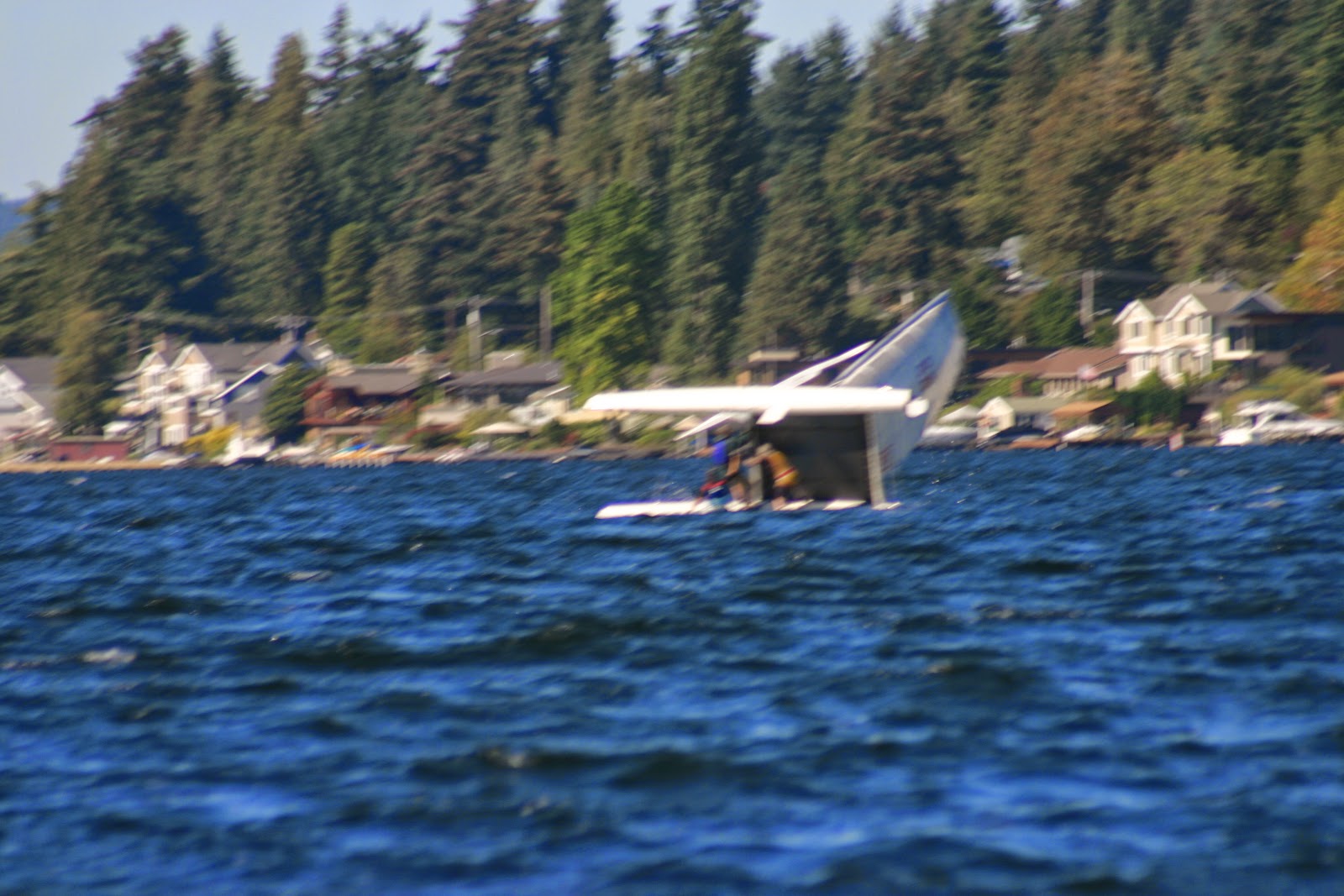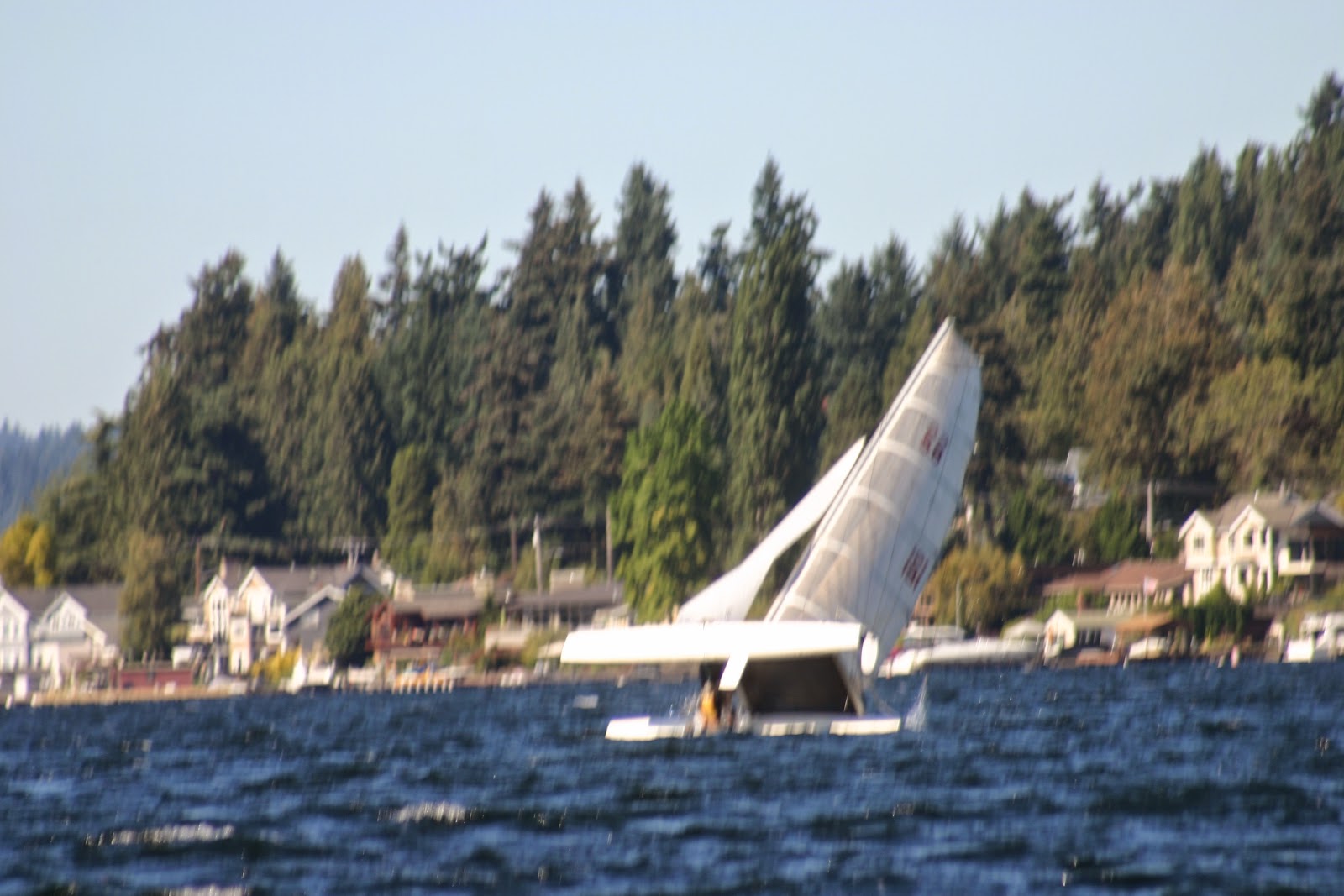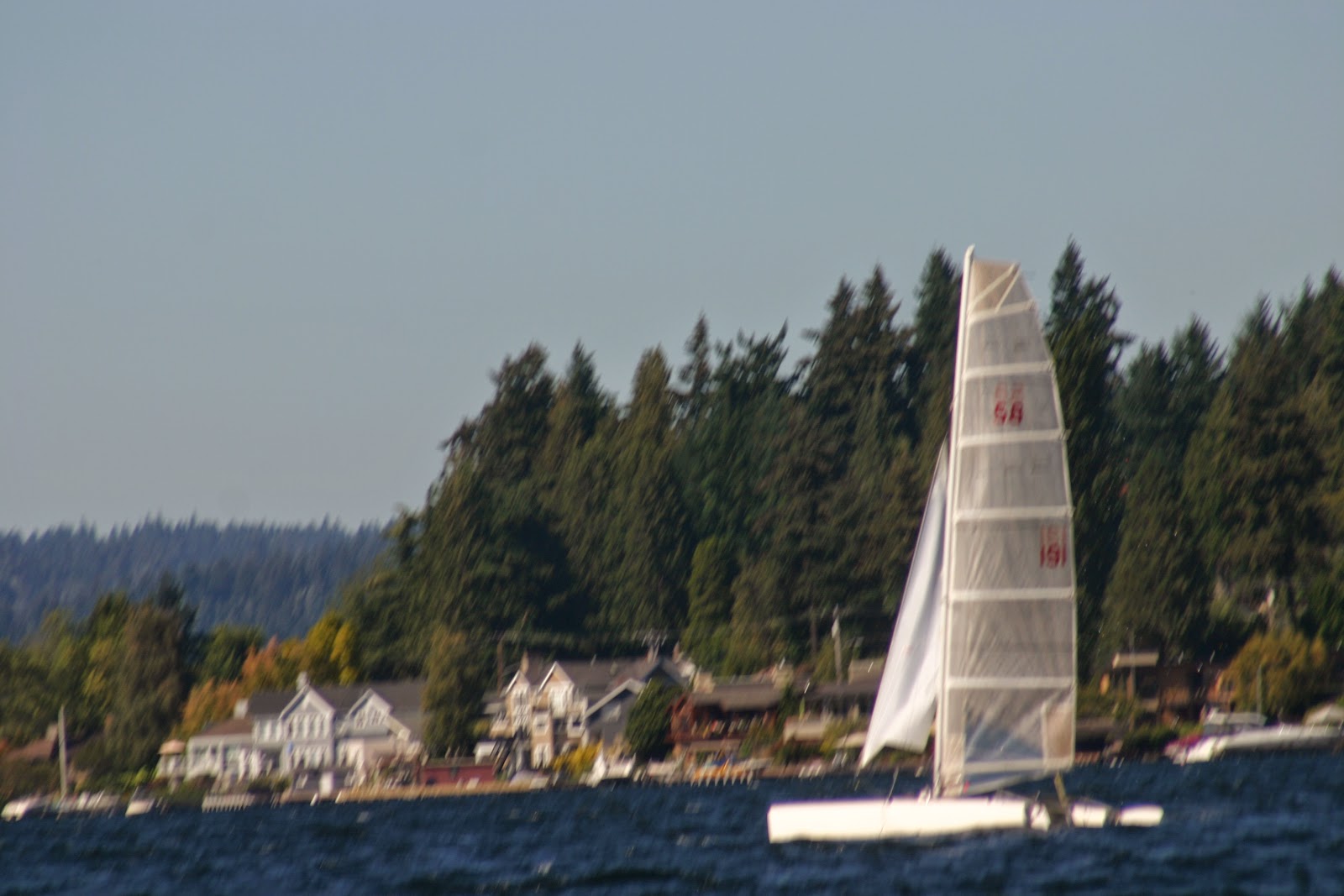
|
|
Sailboat with spinnaker flying
|
We went out for a sail, taking Greg's parents. It was a beautiful day, and
there were more sailboats on the lake than power boats, many with their
spinnakers out. We were briefly entertained when one sailboat lost control of
the spinnaker lines as they tried to raise it and they struggled for a while
trying to reclaim their spinnaker as it flew about.
These beautiful days are going to become more infrequent here soon. The
Seattle area is well known for its rainfall, but much of the rest of the
country thinks that means frequent thunderstorms and heavy rain. It is not
like that at all.
Here is a Seattle joke: A guy visits Seattle and stays at a hotel. He comes
out of the hotel the first day and it is raining. The second day it is
raining. The third day it is raining. He sees a kid on the street and says,
"Hey, kid, does it ever stop raining around here?" The kid replies, "How
should I know, I'm only five!"
Another Seattle joke: We do have a summer in Seattle. Last year it was on a
Wednesday.

|
Temperate rainforests in North America
(from Karl Udo, cropped,
GFDL)
|
These jokes are something of an exaggeration, of course. Seattle falls within
the
Pacific temperate rain forests ecoregion. This rain forest extends from Northern California, all the way to Alaska.
In a rain forest, there are really only two seasons, the rainy season and the
dry season.
In Seattle, the wet season begins some time in September or October and ends
about May or June. During the rainy season, we have as many as 19 days a month
with measurable rainfall. There are many other days with no rain, but no sun
either, being clouded over the whole day. Thunderstorms are infrequent, and
even when we get them, they are usually short and unspectacular.
During the dry season, there is still measurable rain, but tapers down to only
about five days a month. People here complain that Californians come up here
for a vacation during the dry season, see how nice it is, and move here. Then
it starts raining and they gripe for the entire rainy season.
We recently watched a TV series called "The Killing" that is set in Seattle.
It is obvious to any Seattlite that the writers and producers are not from
here. It is actually filmed in Vancouver, British Columbia, Canada, not
Seattle. However, Vancouver has almost exactly the same weather patterns as
Seattle, so that does not explain the rain in the show. The first sign of
non-Seattle production is they have a guy carrying an umbrella. We just do not
do that.
Seattle's rain is typically more like the mist machines in the lines at Disney
World. It gets you a little damp, but it evaporates almost immediately. The
amount in inches is negligible. However, in The Killing, it is obvious that
they film using rain machines, because the rain comes down like it does in
Florida: heavy. There are exceptions in Seattle where the skies open up, but
it is infrequent. In Seattle, you are more likely to wear a lined rain coat
than carry an umbrella.
| J |
F |
M |
A |
M |
J |
J |
A |
S |
O |
N |
D |
|
|
|
|
|
|
|
|
|
|
|
|
|
|
Average high and low temperatures in °F
|
|
Precipitation totals in inches
|
You need the lining for warmth. Seattle has an average temperature of 76°F
during August, the hottest month of the year. We get little snow, though,
because the average temperature during the December through February, the
coldest months, is 36°F. The coldest days usually do not have snow because
clouds trap in heat, and you need clouds for snow. We get this equilibrium
where it might snow, but the clouds hold in enough heat to bring the
temperature above freezing, so it just rains.
When it does snow, Seattle is frightening. Since it happens infrequently here,
drivers do not know how to drive in it. The first thing they do is jam on the
brakes and slide into the thing in front of them, rather than pumping the
brakes and steering. The city shuts down with 2" of snow, as nobody can get to
or from work with the freeways jammed with accidents. At one particular
intersection at the bottom of a hill, in one hour during a snow storm, Greg
witnessed 17 accidents.
In a typical year, we might get one week above 90°F and one week below 32°F.
The hot is actually more of a problem than the cold. Everyone has heat, but
most houses, including ours, have no air conditioning. When it is above 90°F,
it is miserable. We have an air conditioner for the hottest room in the house,
but no central air.
During the rainy season, we may go days without seeing the sun. This causes
problems for some people. They get
Seasonal Affected Disorder, which is a kind of depression induced by the lack of sunshine. The lack of
sunshine from the clouds is compounded by the fact that we are at about 47°
latitude. This causes the sun to set at about 4:10 p.m. on December 5th. On
the other hand, it does give us very long days during the summer dry season.
You can still hit a tennis ball without lights after 9:30 p.m.
All of this makes for perfect sailing conditions in the dry season, and
miserable conditions in the rainy season. We are starting to make plans to
pull the boat out some time in the upcoming weeks.






































